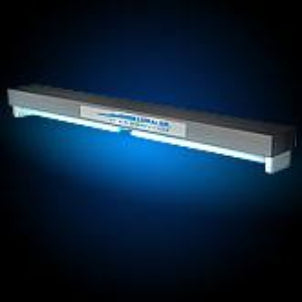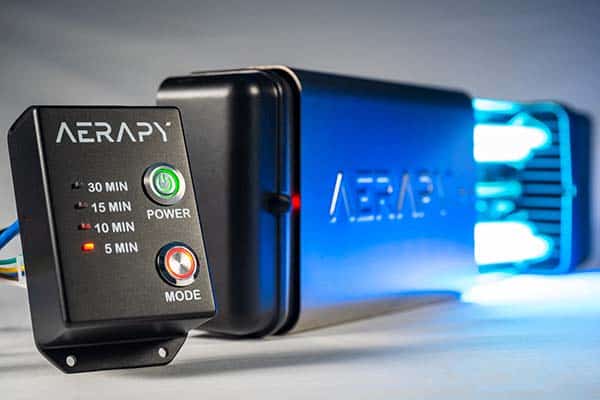UV Surface Disinfection Techniques: Taking Full Advantage Of Efficiency for Germ-Free Spaces
UV Surface Disinfection Techniques: Taking Full Advantage Of Efficiency for Germ-Free Spaces
Blog Article
Utilizing the Potential of UV Disinfection: Shielding Wellness and Hygiene
As the world faces the continuous pandemic and the continuous risk of transmittable illness, the relevance of maintaining wellness and hygiene has actually never been more noticeable. In this context, utilizing the capacity of UV sanitation becomes an encouraging service. UV sanitation, a modern technology widely utilized in numerous industries, has confirmed reliable in getting rid of damaging virus. There is a lot more to check out behind the science of UV disinfection and its applications. From recognizing the mechanisms at play to implementing this innovation in our lives, this discussion aims to clarify the potential of UV sanitation and its role in safeguarding our wellness and health.
Comprehending UV Sanitation
UV sanitation is a highly efficient and commonly made use of method for eliminating harmful virus and ensuring health and health. This method uses ultraviolet (UV) light to suspend bacteria by damaging their DNA and avoiding them from duplicating. UV sanitation is especially reliable versus germs, viruses, and other microbes that can cause conditions and infections.
The principle behind UV sanitation is basic yet effective. When UV light is given off at a specific wavelength, it penetrates the bacterium's cell wall surface and disrupts its genetic material. This process, called photodissociation, causes the development of thymine dimers, which prevent the microbe from replicating and making it safe. UV sanitation can be used in various setups, including water treatment plants, medical care centers, food processing industries, and air purification systems.
One of the benefits of UV disinfection is its ability to efficiently and effectively remove a variety of pathogens without the need for additives or chemicals. Unlike other disinfection methods, such as chlorine or ozone, UV disinfection does not introduce unsafe byproducts or chemical residues right into the environment. Furthermore, UV sanitation is a non-contact procedure, which means that it does not call for physical contact with the microorganisms, decreasing the risk of cross-contamination.

The Science Behind UV Disinfection
The efficiency of UV sanitation exists in its capacity to disrupt the genetic material of microorganisms, making them incapable to replicate and thereby eliminating their damaging capacity. This high-energy UV-C radiation is most efficient in disinfection applications since it can permeate the cell wall surfaces of bacteria and damage their DNA or RNA.
When bacteria are subjected to UV-C radiation, the energy is taken in by their hereditary product, triggering bonds to break and developing chain reactions that disrupt their capability to replicate. This stops the microbes from reproducing and spreading out infection. UV sanitation is specifically reliable against bacteria, fungi, and infections, consisting of usual pathogens such as Escherichia coli, Salmonella, and Influenza.
The scientific research behind UV sanitation is supported by extensive research and research studies. It has actually been shown that exposure to an adequate dosage of UV-C radiation can achieve a high level of disinfection, commonly exceeding 99.9% efficacy in eliminating microbes. It is important to keep in mind that the performance of UV sanitation depends on different aspects, consisting of the strength of UV-C radiation, exposure time, distance from the UV source, and the susceptibility of the microorganism to UV radiation (uv surface disinfection).
Applications of UV Disinfection
Offered the considerable research and effectiveness of UV sanitation in interrupting the genetic material of microbes, it is necessary to check out the numerous functional applications of this technology. UV disinfection has actually shown to be a useful device in a wide variety of markets where preserving a clean and safe setting is vital.
One significant application of UV sanitation remains in healthcare settings. UV light can be utilized to sanitize surface areas, tools, and also the air in medical facilities and clinical centers. This aids to reduce the risk of healthcare-associated infections and guarantees a much safer environment for patients and healthcare workers.
Another essential application is in the food and beverage market. UV disinfection is utilized to deal with water and remove harmful microorganisms, such as E. coli and Salmonella, from the manufacturing procedure. uv surface disinfection. This makes certain the safety and security and top quality of the products we consume
UV disinfection is also widely utilized in water treatment plants and wastewater treatment facilities. It is an efficient technique for ruining dangerous bacteria, viruses, and parasites that can be present in water sources. This helps to supply tidy and safe alcohol consumption water to neighborhoods and safeguard the environment from pollution.
In addition, UV sanitation is utilized Read Full Article in the pharmaceutical industry to sterilize tools and keep the stability of products. It is additionally made use of in research laboratories and research study facilities to avoid contamination and make certain precise results.
Benefits of UV Sanitation Innovation
One notable advantage of utilizing UV disinfection technology is its capacity to successfully remove microorganisms without using rough chemicals. This is especially beneficial in various setups, such as health care facilities, water therapy plants, and food processing industries, where the visibility of dangerous microorganisms poses a substantial danger to public health and safety and security.
Unlike conventional disinfection techniques that depend on chemicals like chlorine or ozone, UV sanitation innovation utilizes ultraviolet light to target and damage the DNA of bacteria, efficiently counteracting their capability to recreate and create infections. This procedure not only eliminates the demand for potentially damaging chemicals but likewise decreases the threat of chemical residue or results remaining in the cured environment.

In addition, UV sanitation technology is environmentally friendly. As it does not depend on making use of chemicals, it gets rid of the demand for their disposal, transport, and manufacturing, lowering the total carbon impact related to sanitation procedures. Furthermore, UV disinfection systems have a longer lifespan compared to chemical-based methods, resulting in much less constant substitute and additional minimizing waste.
Executing UV Disinfection in Life
To efficiently implement UV disinfection in every day life, people this content and organizations can include mobile UV sterilizing tools right into their health routines and cleaning up methods. These gadgets are made to give off ultraviolet light, which has actually been shown to kill or inactivate a wide range of microorganisms, consisting of fungis, infections, and bacteria. By utilizing mobile UV sanitizing tools, people can sanitize commonly touched things and surface areas, such as cellular phone, laptops, tricks, and doorknobs, reducing the threat of spreading germs and infections.
Along with incorporating portable UV sanitizing gadgets, it is essential to follow appropriate standards and suggestions for effective UV disinfection. This includes ensuring that the tool is used appropriately and for the recommended period to accomplish optimum disinfection outcomes. It is also critical to focus on precaution, such as using protective glasses and preventing straight exposure of the UV light to the skin.

In addition, companies can carry out UV sanitation innovation in numerous setups to enhance health methods. For example, hospitals and medical care facilities can make use of UV sanitation robots to disinfect individual rooms, running movie theaters, and other high-touch locations. Food handling markets can incorporate UV sanitation systems right into their assembly line to improve food safety and security and protect against contamination.
Final Thought
In final thought, UV sanitation technology holds terrific possible in safeguarding health and hygiene. With its many benefits, UV sanitation is a beneficial tool for maintaining a clean and healthy atmosphere.
Unlike various other sanitation approaches, such as chlorine or ozone, UV sanitation does not present harmful by-products link or chemical residues into the atmosphere. It is crucial to keep in mind that the performance of UV disinfection depends on various elements, including the intensity of UV-C radiation, exposure time, distance from the UV source, and the vulnerability of the microbe to UV radiation.
One more advantage of UV sanitation innovation is its capacity to provide continual and rapid disinfection. Unlike handbook cleansing techniques, which can be time-consuming and require significant labor, UV sanitation systems can be automated and operate continuously, making sure constant disinfection without human treatment.To effectively apply UV sanitation in everyday life, individuals and companies can incorporate portable UV sterilizing tools right into their hygiene routines and cleaning up practices.
Report this page